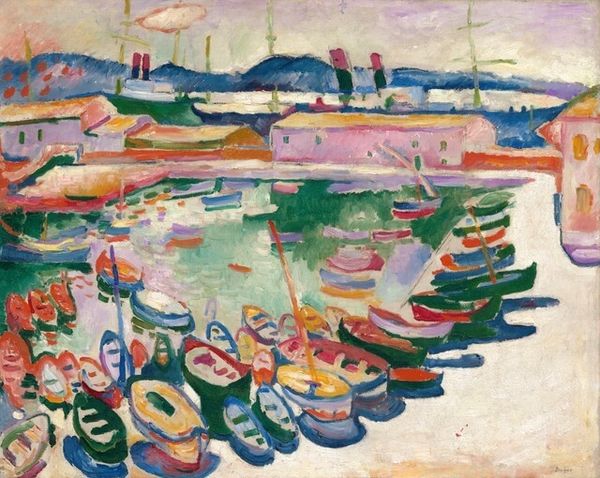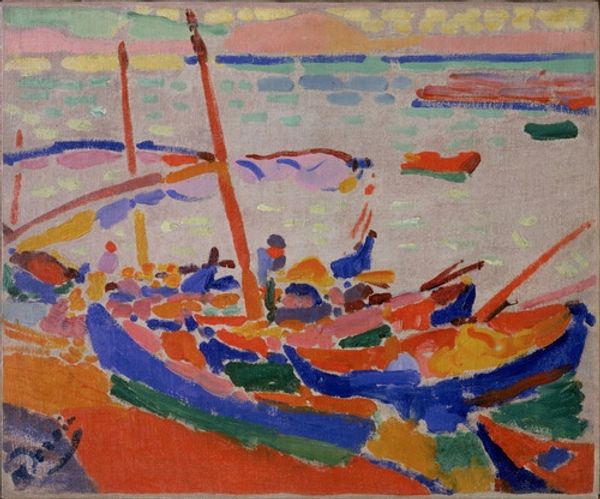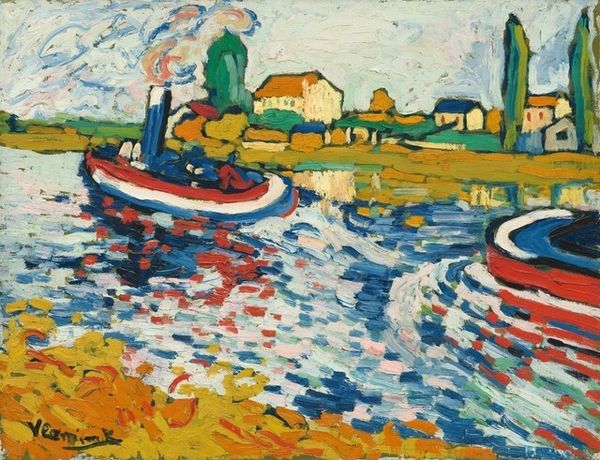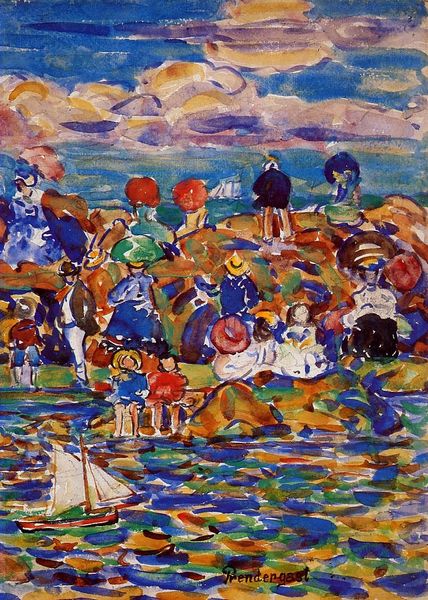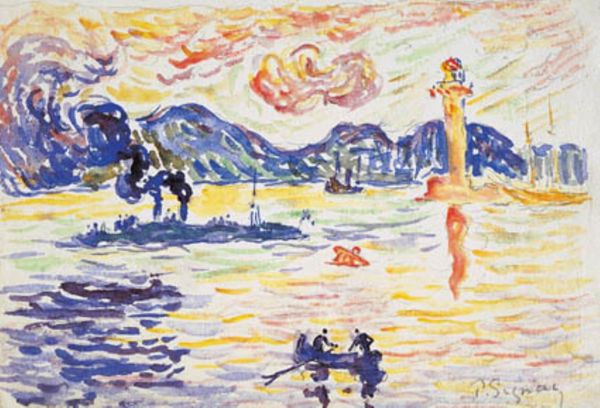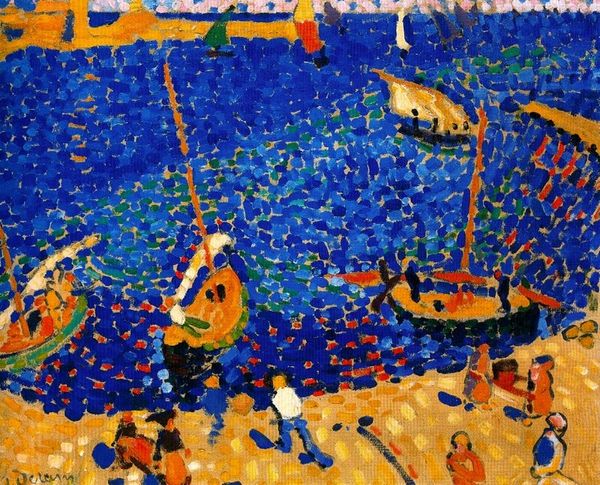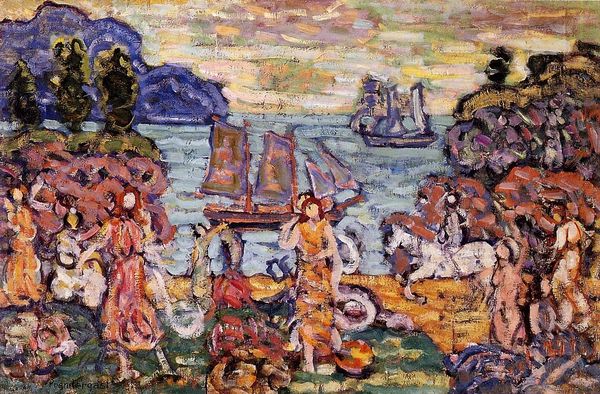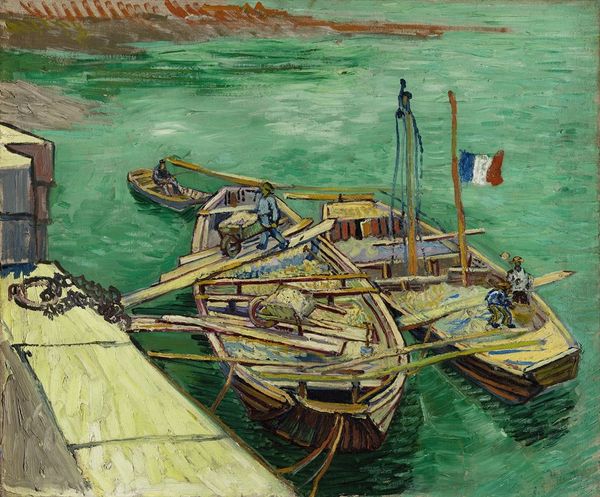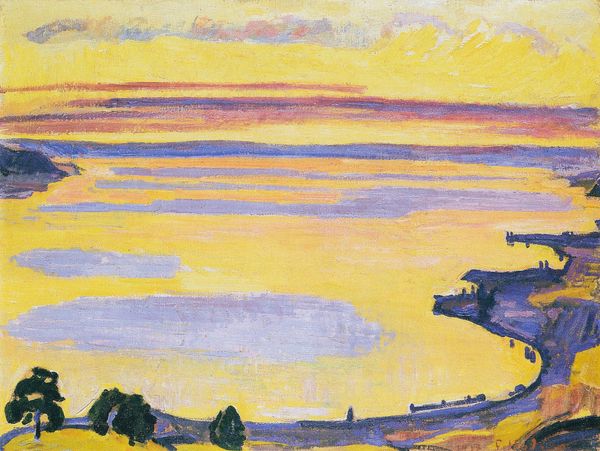
painting, oil-paint
#
boat
#
fauvism
#
ship
#
painting
#
oil-paint
#
landscape
#
form
#
geometric
#
men
#
line
#
cityscape
#
painting art
#
expressionist
Dimensions: 72 x 91 cm
Copyright: Public domain US
Editor: So, we're looking at André Derain's "The Port of Collioure" from 1905. It's an oil painting, and what immediately strikes me is how vibrant and almost chaotic the colors are. There's no attempt to realistically represent the scene. How do you interpret this work in its historical context? Curator: It's precisely this "vibrant chaos" that defines its historical impact. "The Port of Collioure" is a pivotal Fauvist work. Consider the art world of 1905 – still clinging to academic realism. Then, Derain explodes onto the scene with pure, unmodulated color applied in seemingly arbitrary ways. This wasn't just a stylistic choice, it was a challenge to the established art institutions and the very idea of what painting could be. Do you notice how line and form are almost secondary to color itself? Editor: I do. It's as if the colors create the shapes, rather than the other way around. But how was this received by the public at the time? Curator: Shock, mostly! Think about the Salon d'Automne where these Fauvist works were first displayed. Critics were outraged. They saw it as a complete abandonment of skill and tradition, a sign of societal decay even. But this outrage also generated interest, attracting a younger generation of artists eager to break free from the old constraints. In a way, the controversial reception was crucial in establishing Fauvism's importance and its influence on later avant-garde movements. The politics of the art world then were ripe for this kind of rebellion. Editor: So, the initial negative reaction actually fueled its success? It’s amazing to think how different the public perception of art can be at different times. Curator: Precisely. It reminds us that art is always in dialogue with its time, reflecting and shaping the cultural and social landscape.
Comments
No comments
Be the first to comment and join the conversation on the ultimate creative platform.
